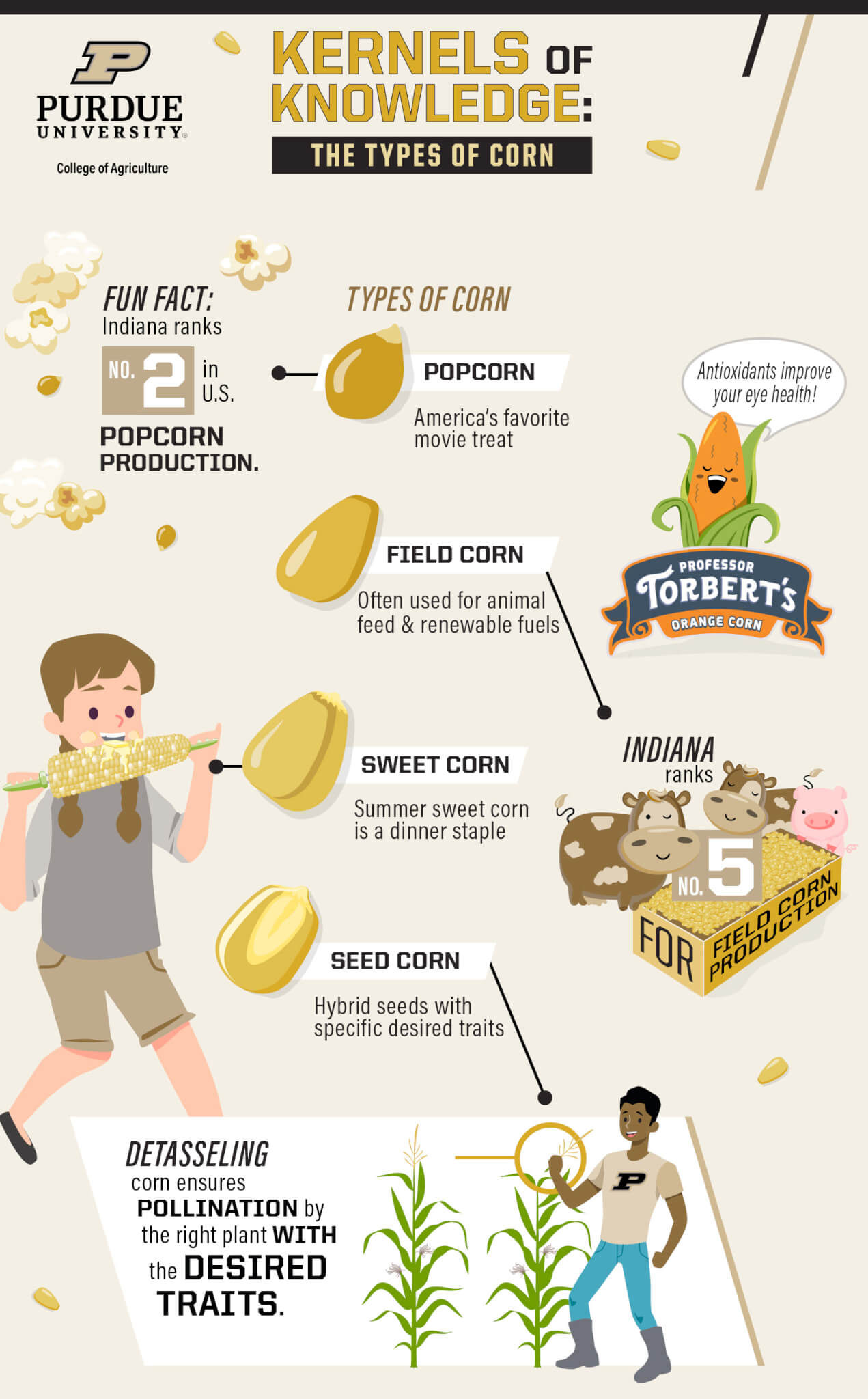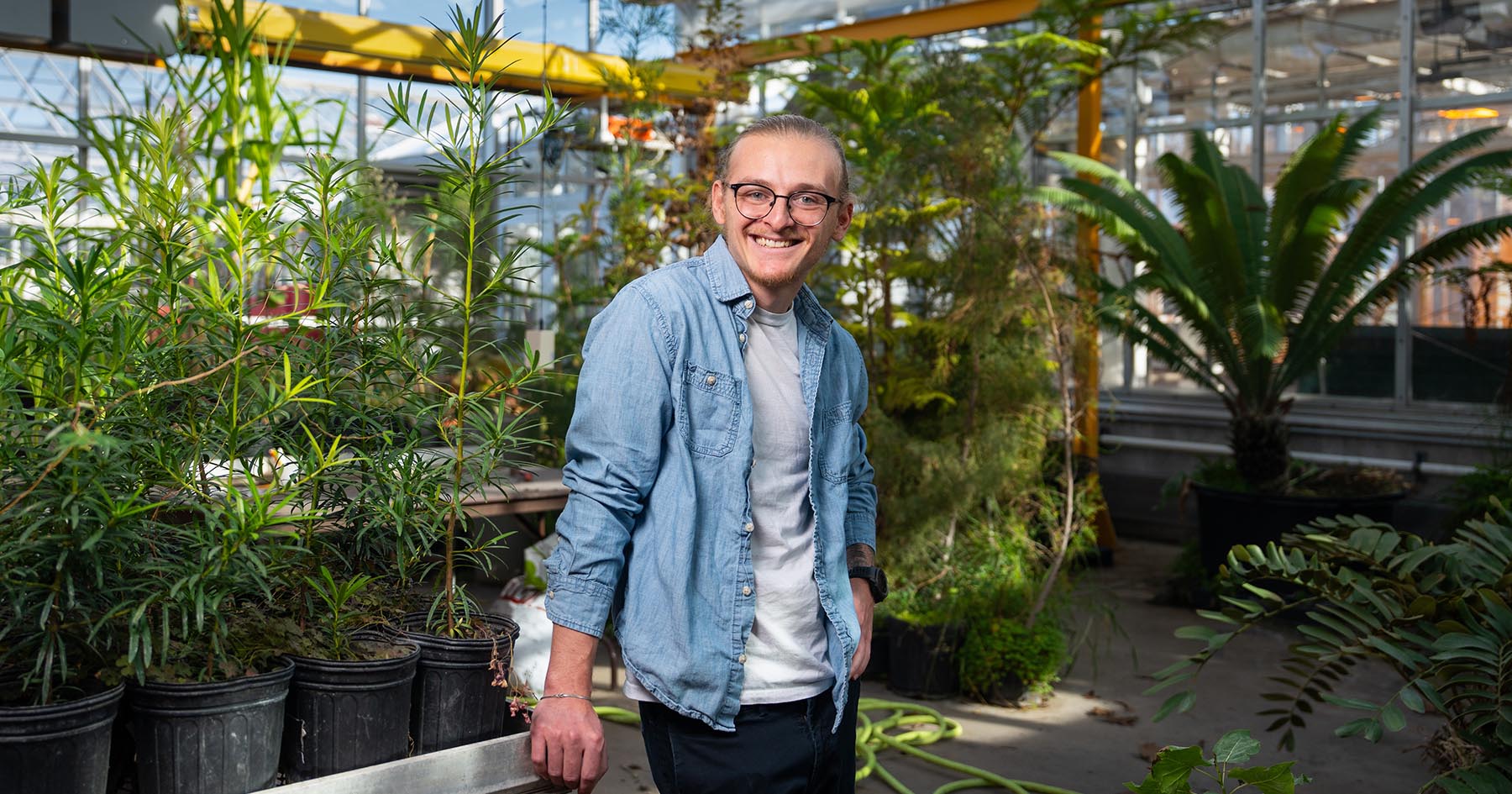Kernels of Knowledge: Corn, a family full of variety
Agriculture is a vital component of Indiana’s history, culture and future. Discover the development of corn and Purdue University’s contributions to its growth with Purdue Agriculture’s short series, Kernels of Knowledge.
If you’re driving in Indiana, one thing is certain in three out of four seasons: you’re going to see a lot of corn! That’s no real surprise, since Indiana ranks second in the U.S. for popcorn production and fifth for field corn production. But, as you’re looking at them, have you ever wondered why some fields of corn are taller than others? Or why people or machines remove corn tassels from some plants but not others?
Read on for answers to those questions and learn about visible traits to help you identify the different types of corn grown in Indiana, with help from Dan Quinn, assistant professor of agronomy and Purdue Extension corn specialist.
One way to recognize popcorn in the field: popcorn tassels are often much larger and droopier than the tassels of field corn. Thanks in part to one of our most famous alumni, Orville Redenbacher, Purdue Agriculture has long been associated with popcorn. Here’s how it works: popcorn kernels are dried to a specific moisture content, then pop and turn inside out as they’re heated and the moisture turns into steam.
Research in the college has been essential to the development of this snack. Bruce Ashman, professor emeritus of botany and plant pathology, built a world-class popcorn genetics program that produced seeds optimal for popping, and Ag Alumni Seed, a Purdue affiliate, is one of the leading global vendors of hybrid popcorn seeds.
Seed corn produces hybrid seeds with specific desired traits that will be used in a future growing season. In the field, seed corn is grown in blocks of female rows with a male row. It’s typically most noticeable during the pollination period, when tassels from the female plants are removed by hand or machine to ensure only the pollen from the male plants is used to pollinate the female plants.






